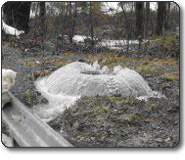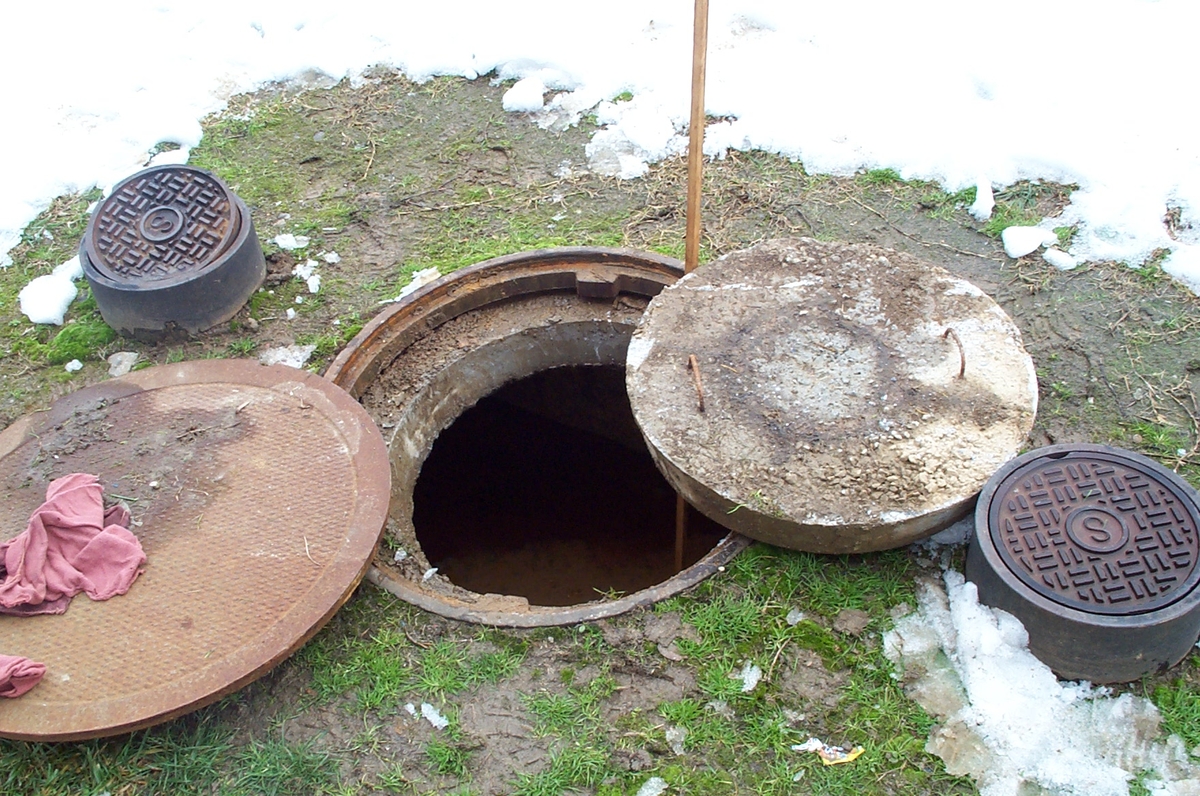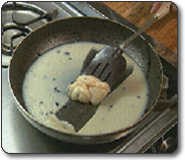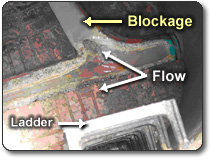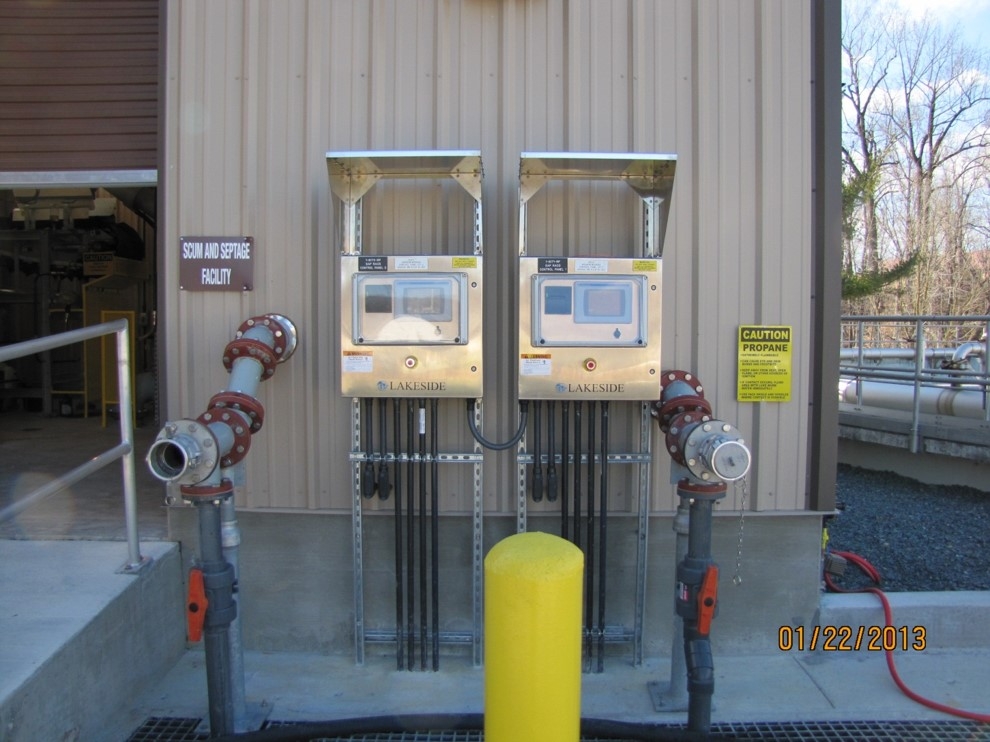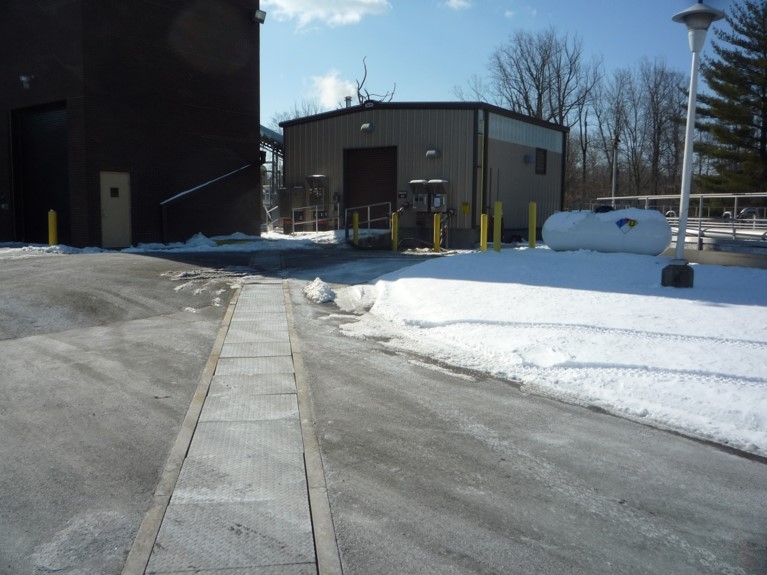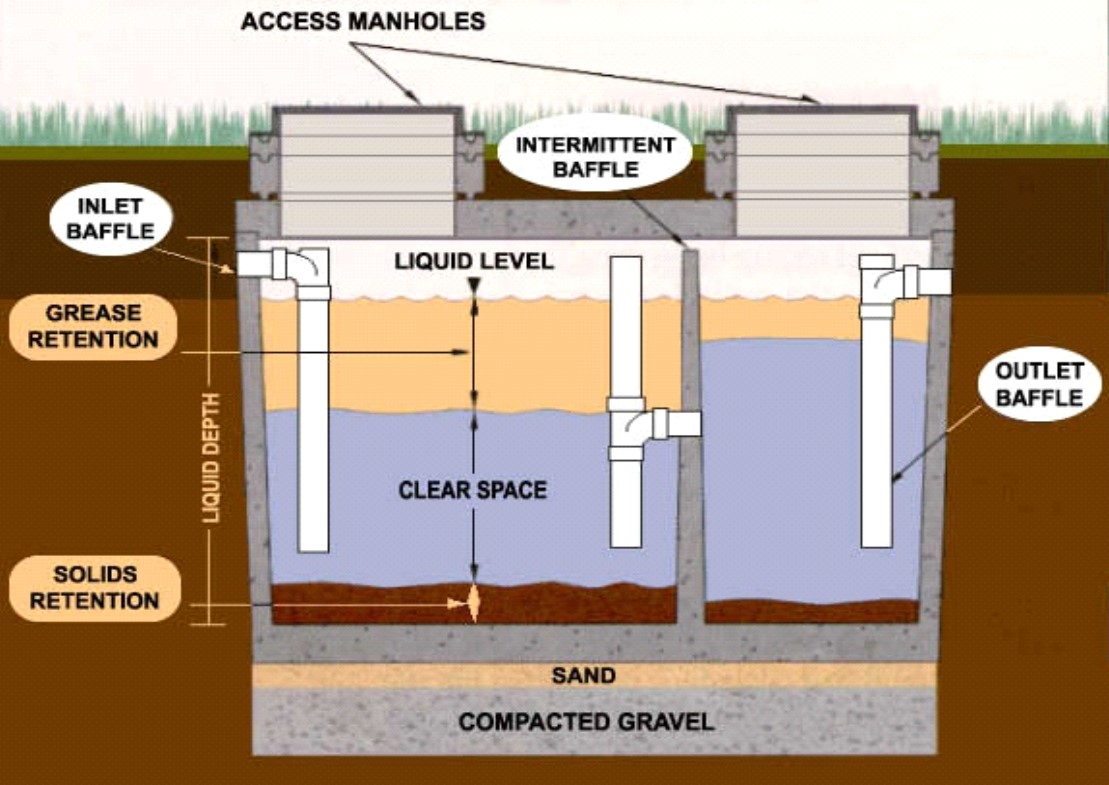Pretreatment Program
Contact us at
Howard County DPW - Utilities
Pretreatment Division
8900 Greenwood Place
Savage MD 20763
410-313-1227
pretreatmentdepartment@howardcountymd.gov
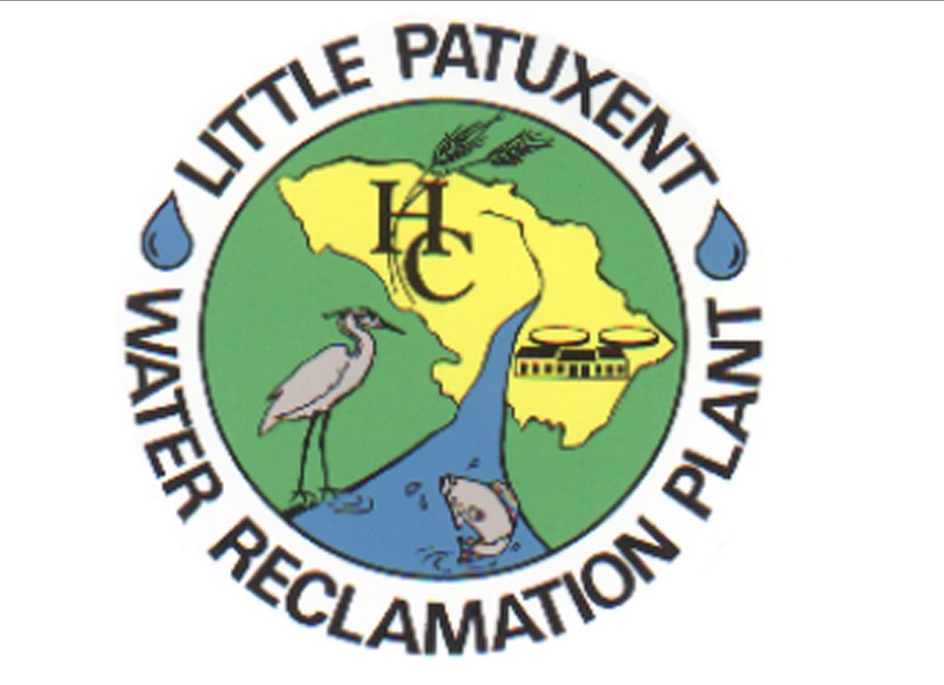
Did you know that nearly 50 percen t of all sewage overflows nationwide are caused by homeowners who improperly dispose of everyday Fats, Oils and Grease ( FOG ) ? These overflows are not just public health issues, but can result in serious damage to our environment, especially pollution of our streams, rivers and the Chesapeake Bay.
As the lead agency that responds to sewage overflows, the Bureau of Utilities has taken on the challenge of educating residents on how they can and should dispose of these fats, oils and grease which are found in foods and food ingredients we use in our homes everyday: meat, cooking oil, butter, shortening, margarine, baked goods, sauces and dairy products.
What happens when you fry bacon, broil hamburgers or bake meat? When you’re finished, what remains in your cooking pan ? The answer is FOG – a real enemy of our sewer system – a substance that, when poured down your drain or into your garbage disposal, will build up over time, constrict the flow of wastewater and eventually cause sewers to back up into homes, overflow sewage into streams, rivers and the Bay.
Howard County’s Bureau of Utilities quickly responds to and resolves these backups and overflows.
However, prevention is the best and wisest solution to this growing problem.
First and foremost, we must reduce the amount of FOG that enters Howard County’s sanitary sewage system.To do this, we are asking homeowners to follow these simple steps when they are recycling or disposing of fats, oils and grease:
- First, minimize the use of excess cooking oils and grease when cooking or frying.
- The best way to handle used cooking grease is to pour it from the pan while it is still somewhat warm into a container that you can freeze, preferably one you'd have to throw away because it's not accepted by your local recycling program. ( Frozen juice cartons work well because they won't melt when they come in contact with hot grease ) Use a rubber spatula to scrape as much of the grease out of the pan as possible, and then it should only take one disposable paper towel to wipe the pan clean.
- Store the container in the freezer, which will keep the grease solid, and pull it out whenever you have fats, oils and grease to dispose of. When it gets full, dump the whole container in the trash.
Dental Compliance Reporting
The Environmental Protection Agency (EPA) has officially signed and submitted the final rule for dental amalgam effluent limitations for publication into the Federal Register (FR) the rule will be effective July 2020.
Practices Affected by the EPA Dental Amalgam Rule
This rule applies to all offices that practice dentistry and discharge their wastewater to a Publicly Owned Treatment Works (POTW), including large institutions and dental clinics. It does not apply to the mobile units.
For dental offices that place or remove dental amalgam, the One-Time Compliance Report must include information on the dental facility and its current operations and a certification that the dental discharger meets the requirements of the applicable performance standard.
For dental offices that do not place or remove dental amalgam, the One-Time Compliance Report must include information on the facility practices and a certification statement that the dental discharger does not work with dental amalgam.
ISO 11143 Compliant Amalgam Separators
The EPA rule states that all amalgam separators installed by dental practices must achieve ISO 11143 standards for mercury removal efficiency and design requirements. The International Organization for Standardization (ISO) established standard 11143 for measuring amalgam separator efficiency and included certain design requirements for proper use and maintenance.
The EPA rule requires that all amalgam separators currently being installed must achieve at least a 95% removal efficiency rating. The EPA also recognizes that offices may currently have amalgam separators in their facilities that do not meet the new requirements. These offices are allowed to continue to operate these older separators for their lifetime or ten years (whichever may come first).
Click here to download the dental one time compliance report dental one time compliance report
Please email reports to the Pretreatment Group at: pretreatmentdepartment@howardcountymd.gov.
Significant Industrial User Information and Application
Significant Industrial User(40 CFR 403.3):
(1) Except as provided in paragraphs (2) and (3) of this section, the term Significant Industrial User means:
(i) All Industrial Users subject to Categorical Pretreatment Standards under 40 CFR 403.6 and 40 CFR chapter I, subchapter N; and
(ii) Any other Industrial User that: discharges an average of 25,000 gallons per day or more of process wastewater to the POTW (excluding sanitary, noncontact cooling and boiler blowdown wastewater); contributes a process waste stream which makes up 5 percent or more of the average dry weather hydraulic or organic capacity of the POTW Treatment plant; or is designated as such by the Control Authority on the basis that the Industrial User has a reasonable potential for adversely affecting the POTW's operation or for violating any Pretreatment Standard or requirement (in accordance with 40 CFR 403.8(f)(6)).
(2) The Control Authority may determine that an Industrial User subject to categorical Pretreatment Standards under § 403.6 and 40 CFR chapter I, subchapter N is a Non-Significant Categorical Industrial User rather than a Significant Industrial User on a finding that the Industrial User never discharges more than 100 gallons per day of total categorical wastewater (excluding sanitary, non-contact cooling and boiler blowdown wastewater, unless specifically included in the Pretreatment Standard) and the following conditions are met:
(i) The Industrial User, prior to the Control Authority's finding, has consistently complied with all applicable categorical Pretreatment Standards and Requirements;
(ii) The Industrial User annually submits the certification statement required in§ 403.12(q) together with any additional information necessary to support the certification statement; and
(iii) The Industrial User never discharges any untreated concentrated wastewater.
(3) Upon a finding that an Industrial User meeting the criteria in paragraph (v)(1)(ii) of this section has no reasonable potential for adversely affecting the POTW's operation or for violating any Pretreatment Standards or requirement, the Control Authority may at any time, on its own initiative or in response to a petition received from an Industrial User or POTW, and in accordance with 40 CFR 403.8(f)(6), determine that such Industrial User is not a Significant Industrial User.
Click here to download the Significant Industrial User Application
Waste Hauler Discharge Permit
1. Howard County Requirements for Hauled Wastes:
A. Only wastes originating in Howard County are accepted at the LPWRP.
2. Each vehicle used in delivering loads to the LPWRP must be inspected and permitted by the Howard County Health Department (Telephone Number. 410-313-1771). Please furnish us with a copy of the most recent scavenger permit.
3. Submit the completed application from, vehicle permits, and surety to:
Little Patuxent Water Reclamation Plant
8900 Greenwood Place
Savage MD 20763
Attn: Pretreatment Department
4. The Waste Hauler Discharge Permit, requirements and reporting procedures will be mailed to you. Failure to comply with these requirements and procedures will be subject to enforcement actions according to the Howard County Code Section 18.122A(L) which can lead to fines or the revocation of your discharge permit.
Industrial Users Discharge Limits
Below are some of the Parameters Industrial Users must meet before being Discharged
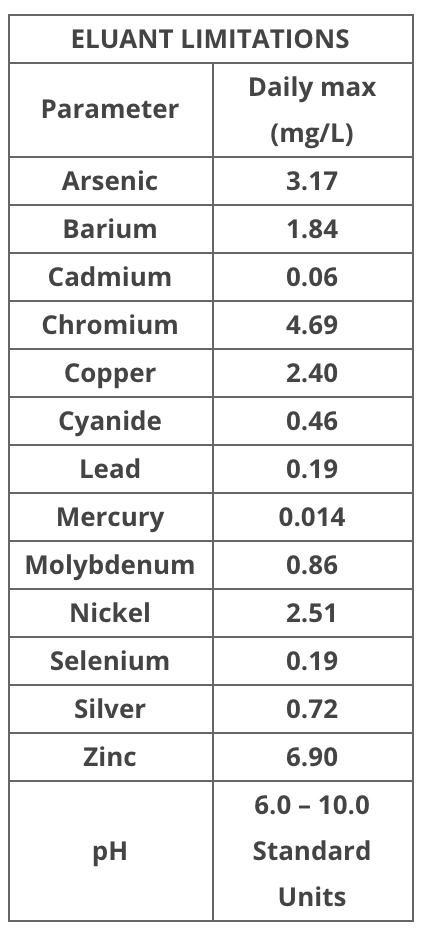
Regulation of Oil, Grease and Food Related Waste Discharges to the Public Sewerage System
Regulation of Oil, Grease and Food Related Waste Discharges to the Public Sewerage System
Dear Food Service Facility Owners and Managers:
Food Service Facilities have the potential to discharge oil, grease, and other food related wastes into the public sewerage system. Over time these discharges plug the sewers and cause back-ups. The sewage then overflows to the nearest outlets, which could be on a road, in your restroom, or in someone else’s basement. When this happens, costs of clean-up, damages, and repairs can be significant depending on where the sewage overflows. Health and other environmental problems can also arise. Your cooperation in preventing blockages in the sewers will prevent unnecessary costs, public health problems, and environmental damages.
Click here to Download the Application/Renewal for Wastewater Discharge Permit
Click here to Download the Semi-Annual Wastewater Discharge Operations and Maintenance Report
Regulation of Vehicle Maintenance Facilities
Regulation of Vehicle Maintenance Facilities
Attn: Owners and Managers:
In conformance with Federal, State and Local requirements, and to insure proper operation of the public sewerage system, Howard County has established a program to control the discharge of wastes from non-domestic sources to the public sewers. This program will affect motor vehicle fueling, maintenance, and repair establishments. The waste control program is specifically authorized by the Howard County Code, Section 18.122A, entitled “Regulation of Discharges to the Public Sewerage System”. The intent of this regulation is:
1. To control fuel, oil, and grease type discharges that have the capability to interfere with the operations of sewage pipelines, pumping stations, or treatment plants.
2. To control discharges of fuels, solvents, chemicals, etc., that may have the capability to cause a combustible or explosive condition.
3. To control discharges of chemicals/solvents that have the capability to interfere with biological treatment processes at the sewage treatment plant.
The Bureau of Utilities is requesting motor vehicle fueling, maintenance and repair establishments to complete the application and return it to our office. The purpose of the application is to update information related to your facility size, services, and waste disposal methods.
Typical Grease Trap Interceptor
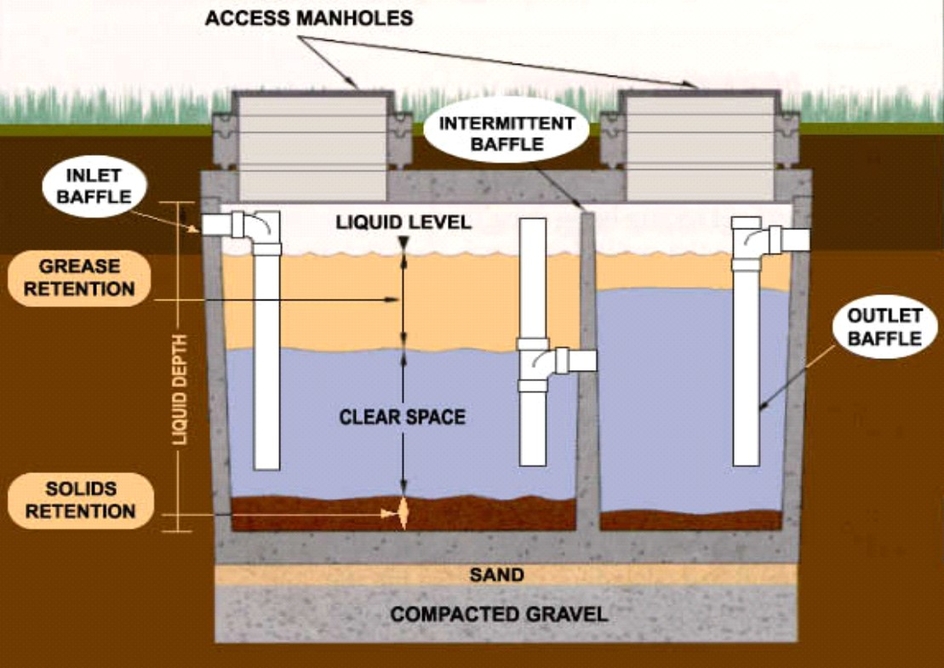
Download Howard County's
"Tackle the Grease in Your Kitchen"
Do's and Don't's Poster.
Frequently Asked Questions
What is FOG?
Fats, Oils, and Grease ( FOG ) are byproducts of cooking and meat cutting. FOG can be found in meat fats, oils, shortening, butter, margarine, sauces, and dairy products.
Why is FOG an issue for me?
When FOG are poured down drains or in garbage disposals, they build up in our sewer systems and can back up in our sinks, toilets and possibly into your own or somebody else’s basement. These backups pose serious public health and environmental problems – and they can be very costly too. Sewer overflows damage the environment by affecting the health of our waterways. By learning how to safely recycle or dispose of FOG, we are accepting some of the responsibility for the health of our environment and the quality of life we enjoy in Howard County.
What can I do?
Whenever food is cooked, byproducts ( especially cooking oils and grease) should NOT be poured down the drain or into garbage disposals. Pans and pots with heavy grease build up should be wiped with a paper towel before being placed in the dishwasher.
What about the piping in my house?
The first pipes that will become blocked with FOG will be your own pipes and that could result in expensive plumbing bills. Keeping FOG out of your drains and the sewer system is good for your home’s plumbing.
Residential Used Cooking Oil Collection Program at Alpha Ridge Landfill
The Howard County Landfill now accepts used vegetable-based cooking oil from residents for recycling. Any type of liquid vegetable oil (i.e., peanut, corn, canola, olive, etc) is accepted. Used cooking oil may be brought to the Alpha Ridge Landfill where they have a Used Cooking Oil Tank to pour the oil into. Please call (410) 313-6444 to arrange an appointment for large quantities.
Please make sure that the cooking oil is not mixed with other fluids ( water, petroleum products, soaps, etc ). Place the cooking oil in a container with a tight-fitting lid, metal or plastic containers are preferable. Do not fill any container while the cooking oil is still hot as this could cause the container to crack or split; let the oil cool down for a few minutes before filling a container.
Vegetable oil that is mixed with small amounts of animal fats can be recycled as long as the amount of added animal fat has not caused the liquid to solidify. The method of collection that is being used can only handle liquids, not solids.
Used cooking oil is recycled into several valuable commodities including industrial fuel, soap, cosmetics, poultry feed, and many more.
The Environmental Protection Agency provides information on how commercial food service establishments can better control FOG discharge.
"EPA's commercial FOG Fact Sheet"

By changing our habits one person at a time, one meal at a time, and one household at a time, we can substantially improve the health of our streams, rivers and the Chesapeake Bay and create a sustainable, GREEN Howard County
